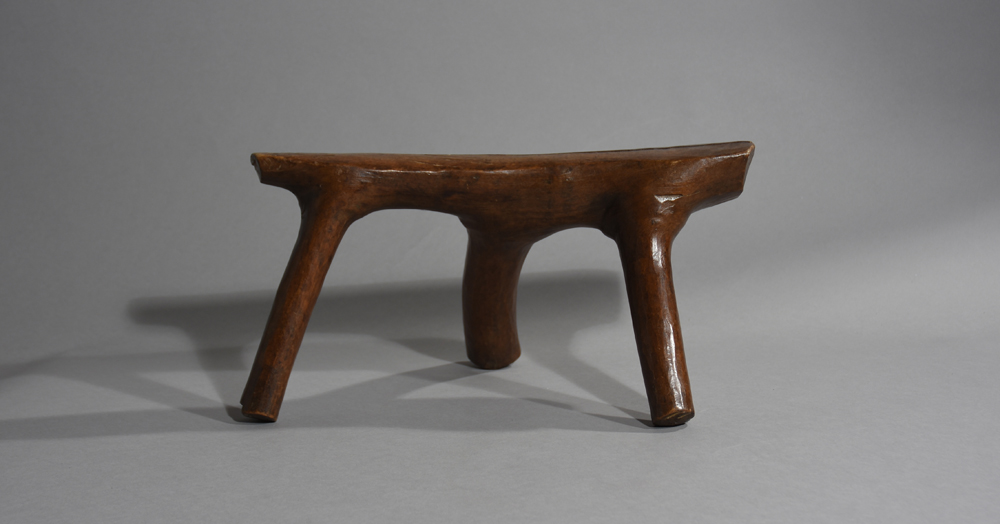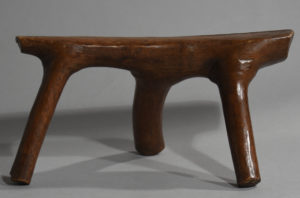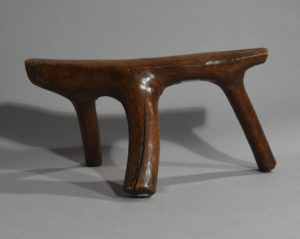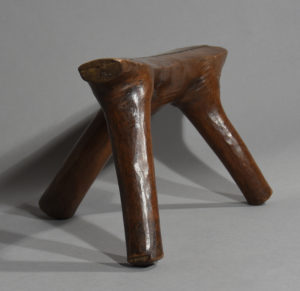ACK 0619-1
Dinka ‘tree-legged’ Headrest, Sudan.
This elegant three-legged headrest, with its charming and simple design, is a well-known example of the arts, which represents many of the items that Dinka Lotuko people of South Sudan surrounds himself with. It expresses both tradition and artistic design and contains everything that characterizes Dinka people and their historical and cultural background from the Shilluk dynasty.
Among the Shilluk, Westermann noted that neckrests were used by men so that their hairstyles would not be ruined during sleep. Many East African pastoralists regard coiffure primarily as an indicator of status. Among these groups a young man is entitled to begin wearing the distinctive coiffure that marks him as an adult only after he is initiated. As each member of the age set rises through the hierarchical society, changes in jewelry, hairstyle and feather decorations for the hair often mark each promotion. The use of headrests is often associated with this advancement and the headrests themselves become status symbols. Whether this pattern is true for the Shilluk and Dinka is unknown, but it certainly seems likely as Shilluk men still wear elaborate coiffures, and among the Dinka headrests/stools are primarily used by older men. The Dinka multi-purpose headrests/stools also provide a convenient place to sit as it is not considered proper for elderly men to sit directly on the ground.
Age: Early 20th Century.
Measure: L: 38, W: 23 cm
Condition: Despite age and diligent use, this classic headrest with its shiny, brown-golden color appears in an exceptionally good condition. A few ‘natural’ cracks simply make the head rest more authentic.
Literature: Dewey William; J. SLEEPING BEAUTIES. The Jerome L. Joss Collection of African Headrests at UCLA, Fowler Museum of Cultural History. University of California, Los Angeles. William Dewey; “Africa, The Art of a Continent”
Request price for Dinka Headrest




